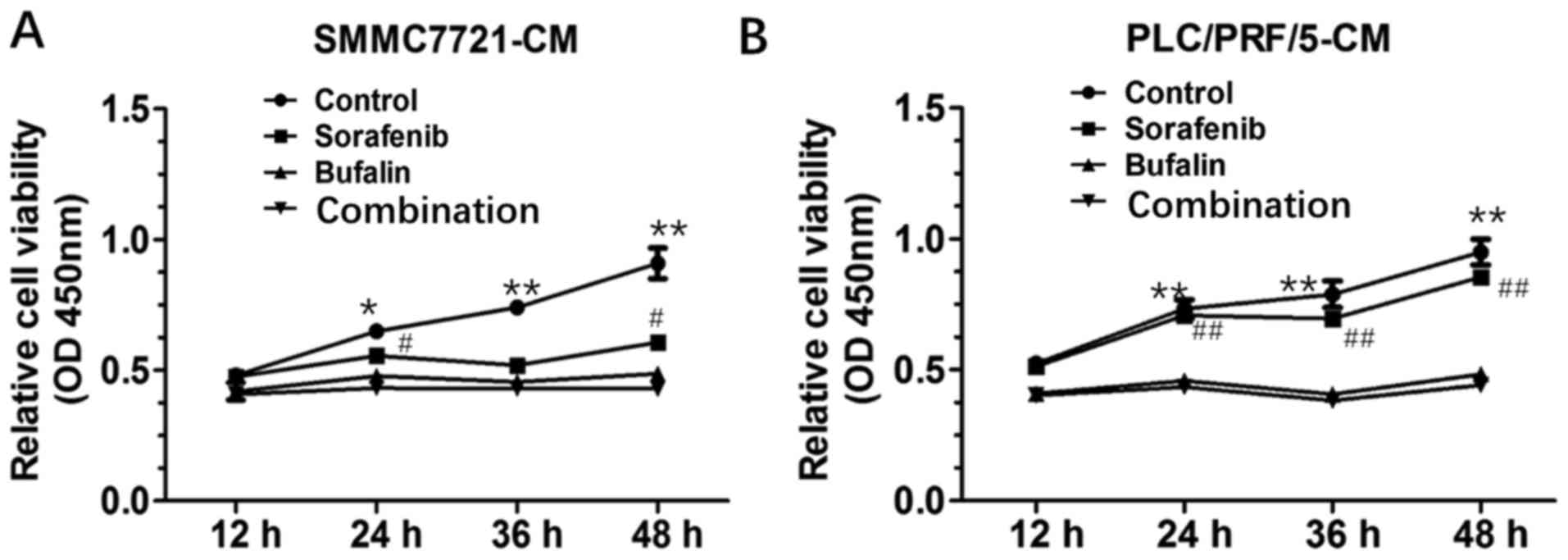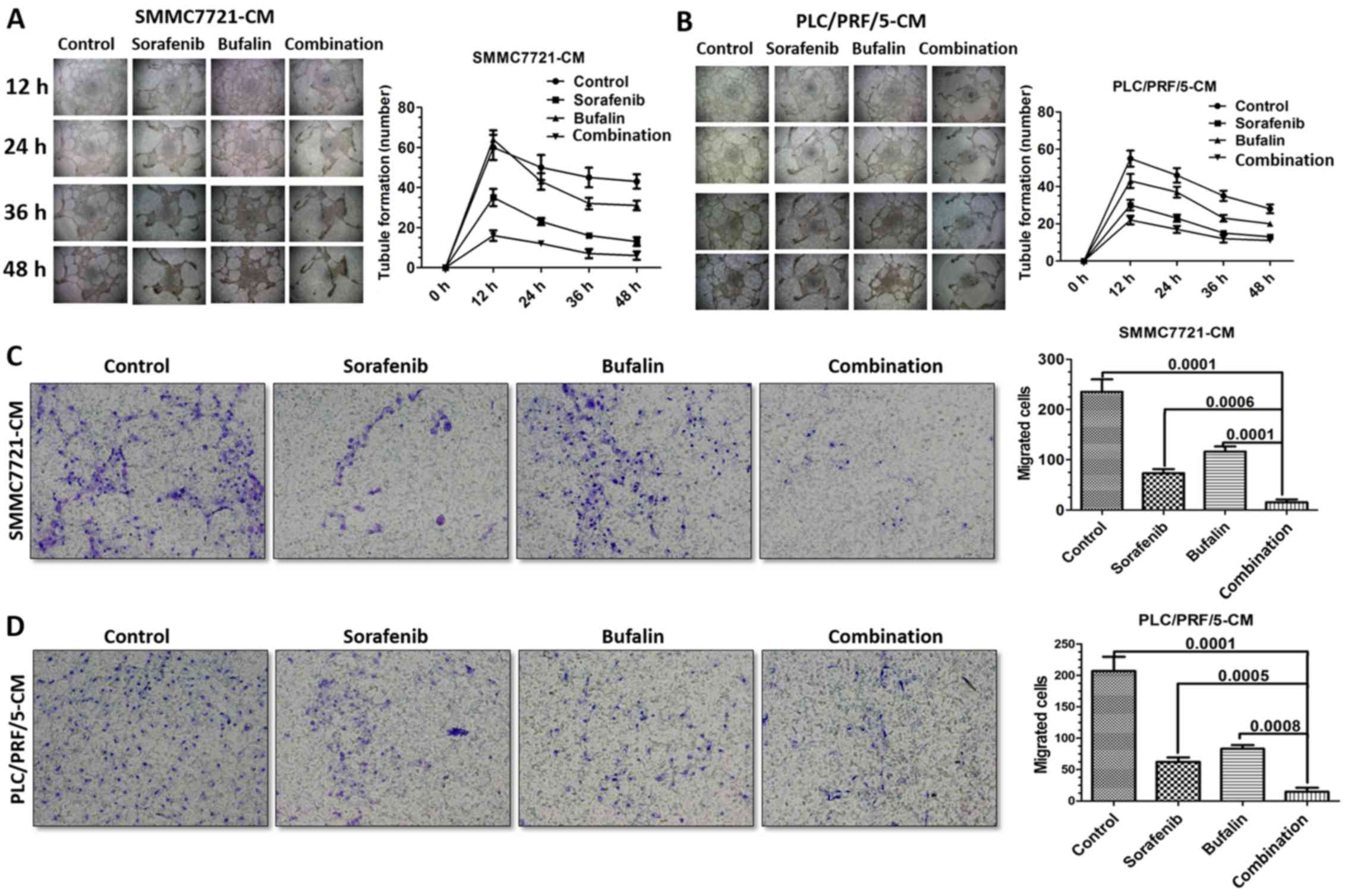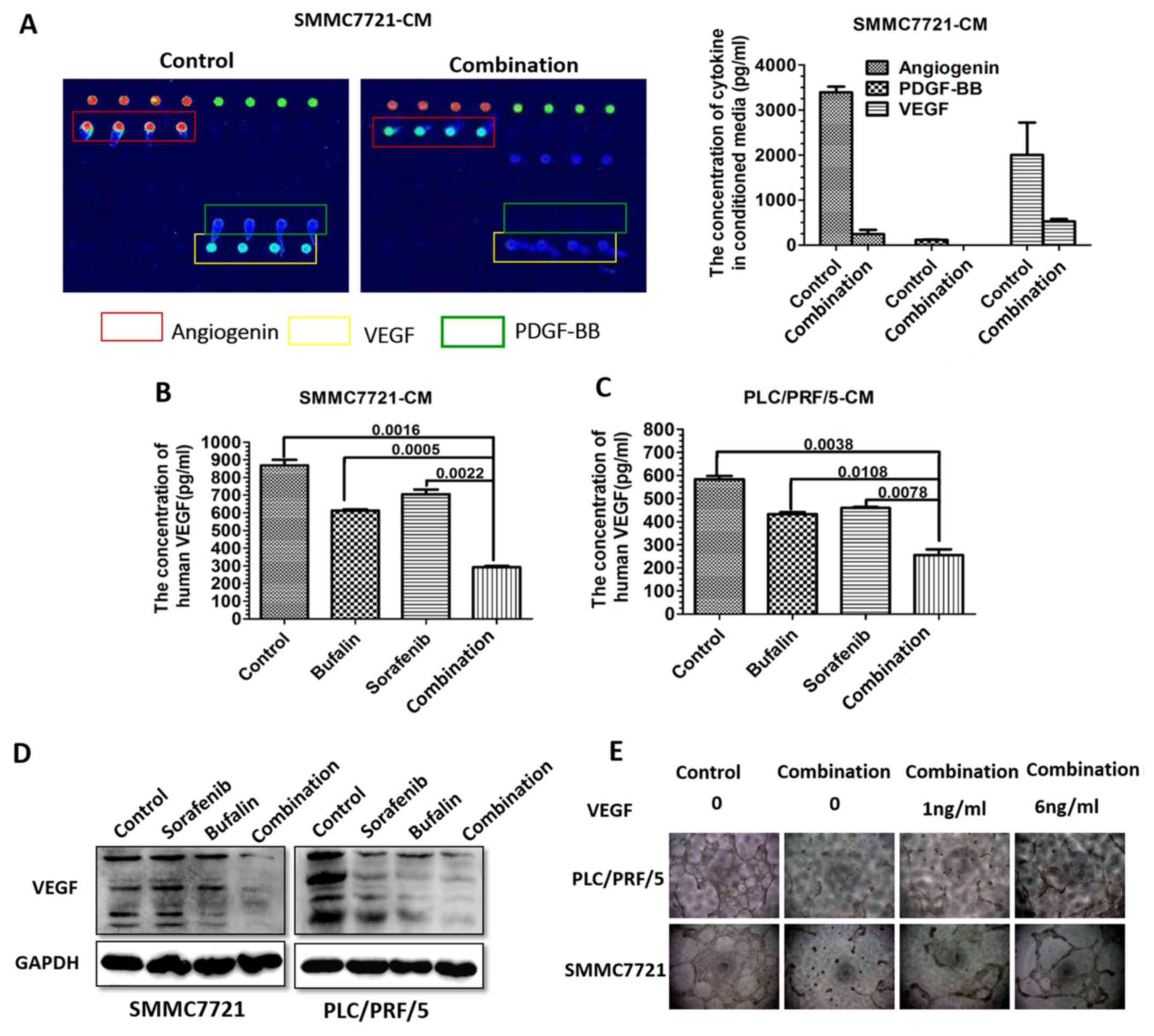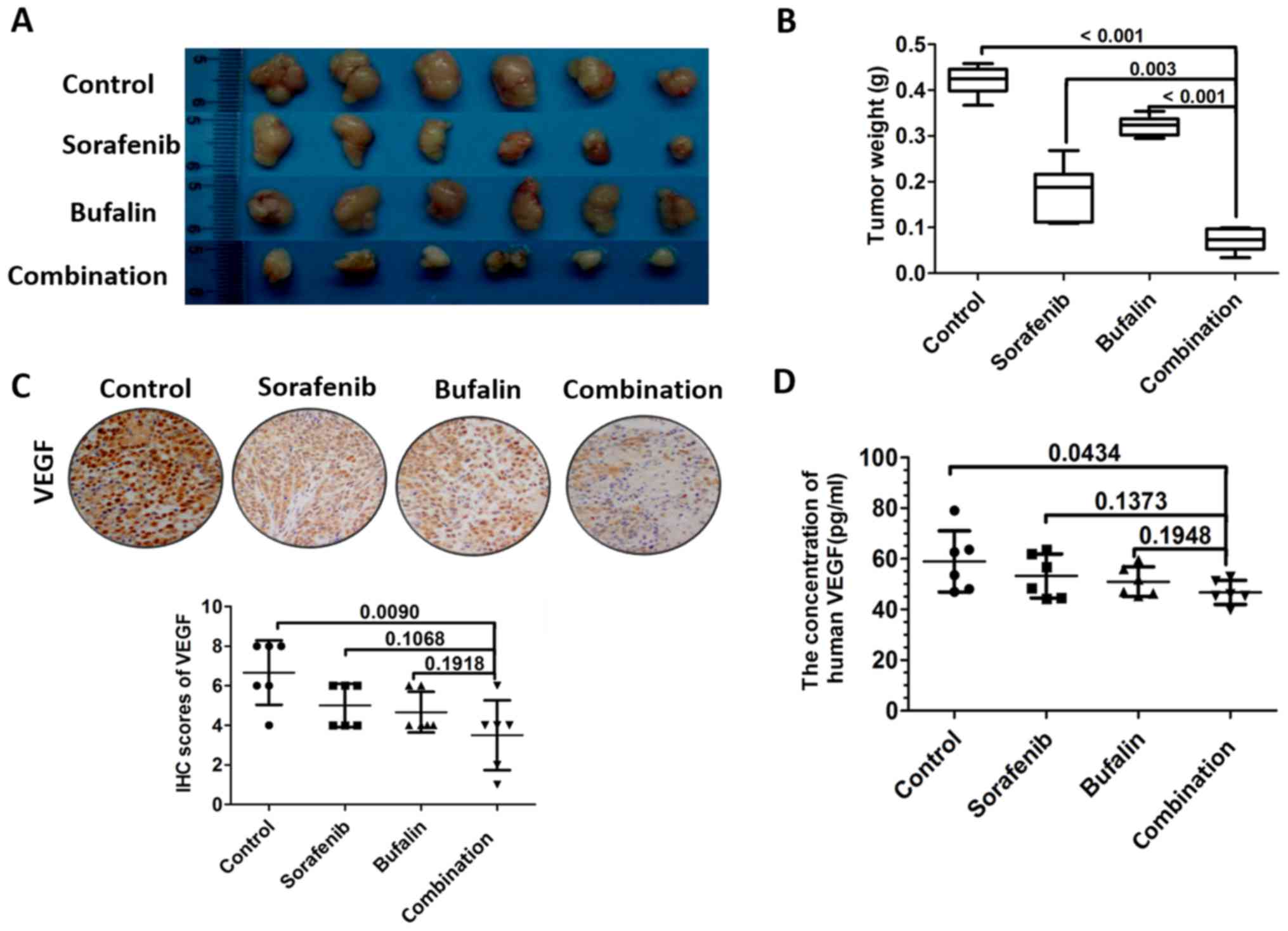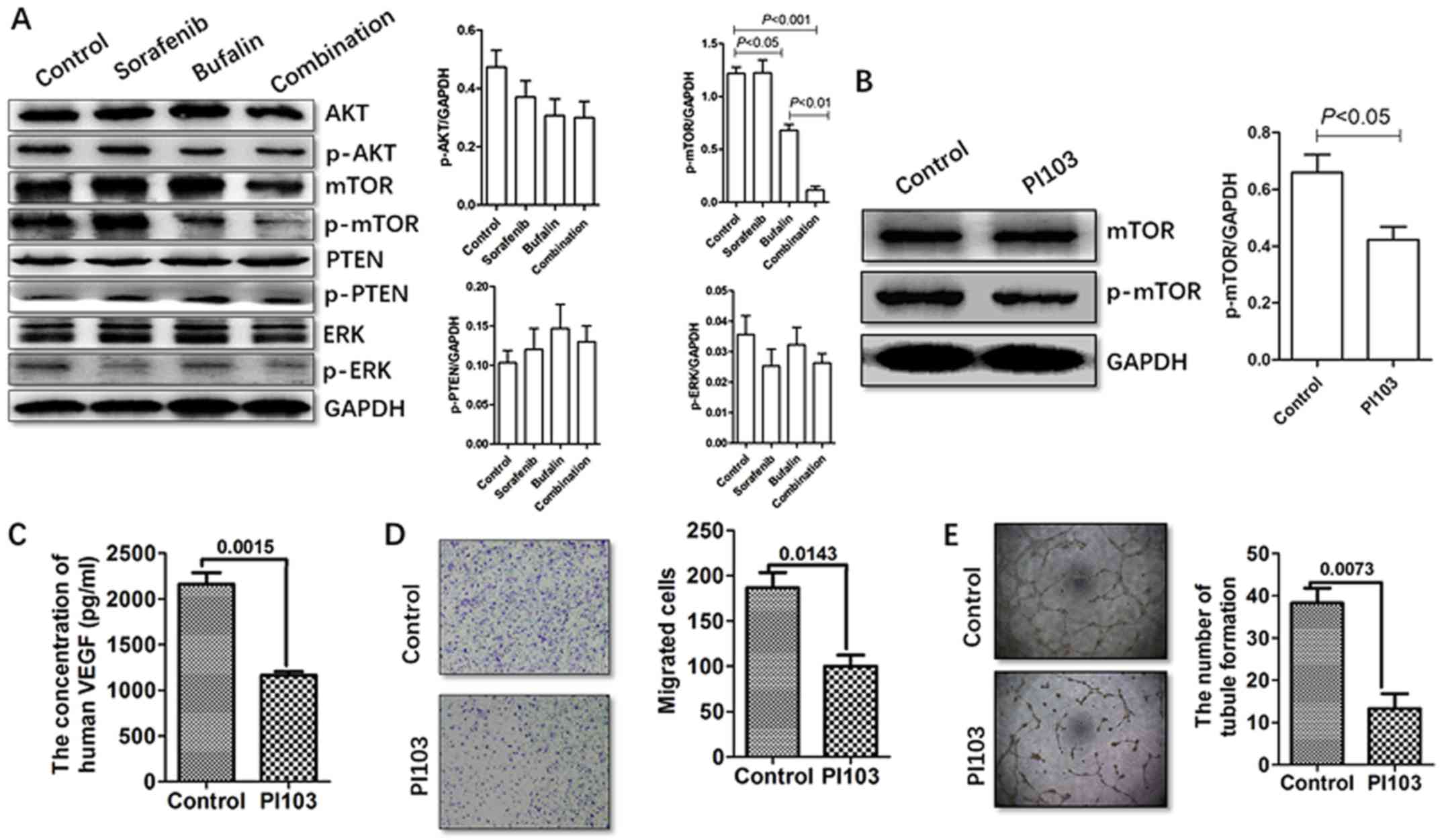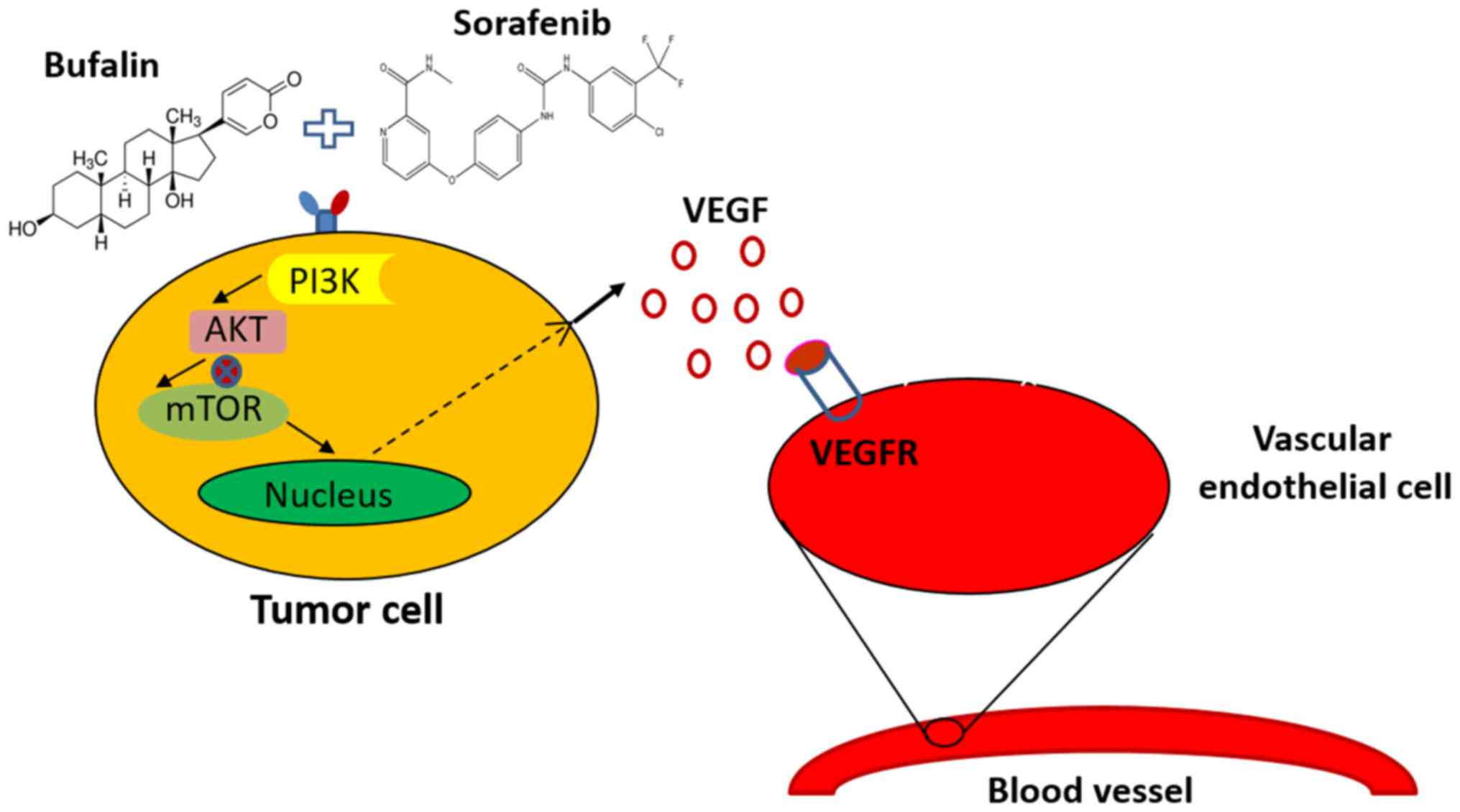|
1
|
Borzio M, Dionigi E, Parisi G, Raguzzi I
and Sacco R: Management of hepatocellular carcinoma in the elderly.
World J Hepatol. 7:1521–1529. 2015. View Article : Google Scholar
|
|
2
|
Folkman J: Tumor angiogenesis: Therapeutic
implications. N Engl J Med. 285:1182–1186. 1971. View Article : Google Scholar
|
|
3
|
Folkman J: Anti-angiogenesis: New concept
for therapy of solid tumors. Ann Surg. 175:409–416. 1972.
View Article : Google Scholar
|
|
4
|
Folkman J: Role of angiogenesis in tumor
growth and metastasis. Semin Oncol. 29(Suppl 16): 15–18. 2002.
View Article : Google Scholar
|
|
5
|
Portillo-Lara R and Annabi N:
Microengineered cancer-on-a-chip platforms to study the metastatic
microenvironment. Lab Chip. 16:4063–4081. 2016. View Article : Google Scholar
|
|
6
|
Maj E, Papiernik D and Wietrzyk J:
Antiangiogenic cancer treatment: The great discovery and greater
complexity (Review). Int J Oncol. 49:1773–1784. 2016. View Article : Google Scholar
|
|
7
|
Yang Y, Zhang Y, Iwamoto H, Hosaka K, Seki
T, Andersson P, Lim S, Fischer C, Nakamura M, Abe M, et al:
Discontinuation of anti-VEGF cancer therapy promotes metastasis
through a liver revascularization mechanism. Nat Commun.
7:126802016. View Article : Google Scholar
|
|
8
|
Falchook GS, Moulder S, Naing A, Wheler
JJ, Hong DS, Piha-Paul SA, Tsimberidou AM, Fu S, Zinner R, Janku F,
et al: A phase I trial of combination trastuzumab, lapatinib, and
bevacizumab in patients with advanced cancer. Invest New Drugs.
33:177–186. 2015. View Article : Google Scholar
|
|
9
|
Fan X, Krieg S, Kuo CJ, Wiegand SJ,
Rabinovitch M, Druzin ML, Brenner RM, Giudice LC and Nayak NR: VEGF
blockade inhibits angiogenesis and reepithelialization of
endometrium. FASEB J. 22:3571–3580. 2008. View Article : Google Scholar
|
|
10
|
Hong DS, Garrido-Laguna I, Ekmekcioglu S,
Falchook GS, Naing A, Wheler JJ, Fu S, Moulder SL, Piha-Paul S,
Tsimberidou AM, et al: Dual inhibition of the vascular endothelial
growth factor pathway: A phase 1 trial evaluating bevacizumab and
AZD2171 (cediranib) in patients with advanced solid tumors. Cancer.
120:2164–2173. 2014. View Article : Google Scholar
|
|
11
|
Liu L, Cao Y, Chen C, Zhang X, McNabola A,
Wilkie D, Wilhelm S, Lynch M and Carter C: Sorafenib blocks the
RAF/MEK/ERK pathway, inhibits tumor angiogenesis, and induces tumor
cell apoptosis in hepatocellular carcinoma model PLC/PRF/5. Cancer
Res. 66:11851–11858. 2006. View Article : Google Scholar
|
|
12
|
Pressiani T, Boni C, Rimassa L, Labianca
R, Fagiuoli S, Salvagni S, Ferrari D, Cortesi E, Porta C,
Mucciarini C, et al: Sorafenib in patients with Child-Pugh class A
and B advanced hepatocellular carcinoma: A prospective feasibility
analysis. Ann Oncol. 24:406–411. 2013. View Article : Google Scholar
|
|
13
|
Sposito C, Mariani L, Germini A, Flores
Reyes M, Bongini M, Grossi G, Bhoori S and Mazzaferro V:
Comparative efficacy of sorafenib versus best supportive care in
recurrent hepatocellular carcinoma after liver transplantation: A
case-control study. J Hepatol. 59:59–66. 2013. View Article : Google Scholar
|
|
14
|
Feng F, Jiang Q, Cao S, Cao Y, Li R, Shen
L, Zhu H, Wang T, Sun L, Liang E, et al: Pregnane X receptor
mediates sorafenib resistance in advanced hepatocellular carcinoma.
Biochim Biophys Acta. 1862:1017–1030. 2018. View Article : Google Scholar
|
|
15
|
Quintavalle C, Hindupur SK, Quagliata L,
Pallante P, Nigro C, Condorelli G, Andersen JB, Tagscherer KE, Roth
W, Beguinot F, et al: Phosphoprotein enriched in diabetes
(PED/PEA15) promotes migration in hepatocellular carcinoma and
confers resistance to sorafenib. Cell Death Dis. 8:e31382017.
View Article : Google Scholar
|
|
16
|
Takai N, Ueda T, Nishida M, Nasu K and
Narahara H: Bufalin induces growth inhibition, cell cycle arrest
and apoptosis in human endometrial and ovarian cancer cells. Int J
Mol Med. 21:637–643. 2008.
|
|
17
|
Huang WW, Yang JS, Pai SJ, Wu PP, Chang
SJ, Chueh FS, Fan MJ, Chiou SM, Kuo HM, Yeh CC, et al: Bufalin
induces G0/G1 phase arrest through inhibiting the levels of cyclin
D, cyclin E, CDK2 and CDK4, and triggers apoptosis via
mitochondrial signaling pathway in T24 human bladder cancer cells.
Mutat Res. 732:26–33. 2012. View Article : Google Scholar
|
|
18
|
Yin JQ, Shen JN, Su WW, Wang J, Huang G,
Jin S, Guo QC, Zou CY, Li HM and Li FB: Bufalin induces apoptosis
in human osteosarcoma U-2OS and U-2OS methotrexate300-resistant
cell lines. Acta Pharmacol Sin. 28:712–720. 2007. View Article : Google Scholar
|
|
19
|
Wang H, Zhang C, Ning Z, Xu L, Zhu X and
Meng Z: Bufalin enhances anti-angiogenic effect of sorafenib via
AKT/VEGF signaling. Int J Oncol. 48:1229–1241. 2016. View Article : Google Scholar
|
|
20
|
Wang H, Zhang C, Xu L, Zang K, Ning Z,
Jiang F, Chi H, Zhu X and Meng Z: Bufalin suppresses hepatocellular
carcinoma invasion and metastasis by targeting HIF-1α via the
PI3K/AKT/mTOR pathway. Oncotarget. 7:20193–20208. 2016.
|
|
21
|
Qiu DZ, Zhang ZJ, Wu WZ and Yang YK:
Bufalin, a component in Chansu, inhibits proliferation and invasion
of hepatocellular carcinoma cells. BMC Complement Altern Med.
13:1852013. View Article : Google Scholar
|
|
22
|
Gao Y, Li HX, Xu LT, Wang P, Xu LY, Cohen
L, Yang PY, Gu K and Meng ZQ: Bufalin enhances the
anti-proliferative effect of sorafenib on human hepatocellular
carcinoma cells through downregulation of ERK. Mol Biol Rep.
39:1683–1689. 2012. View Article : Google Scholar
|
|
23
|
Zhuang L, Xu L, Wang P, Jiang Y, Yong P,
Zhang C, Zhang H, Meng Z and Yang P:
Na+/K+-ATPase α1 subunit, a novel therapeutic
target for hepatocellular carcinoma. Oncotarget. 6:28183–28193.
2015.
|
|
24
|
Butler JM, Kobayashi H and Rafii S:
Instructive role of the vascular niche in promoting tumour growth
and tissue repair by angiocrine factors. Nat Rev Cancer.
10:138–146. 2010. View
Article : Google Scholar
|
|
25
|
Kerbel RS: Tumor angiogenesis. N Engl J
Med. 358:2039–2049. 2008. View Article : Google Scholar
|
|
26
|
Ferrara N and Kerbel RS: Angiogenesis as a
therapeutic target. Nature. 438:967–974. 2005. View Article : Google Scholar
|
|
27
|
Bridges EM and Harris AL: The angiogenic
process as a therapeutic target in cancer. Biochem Pharmacol.
81:1183–1191. 2011. View Article : Google Scholar
|
|
28
|
Fu L, Shi K, Wang J, Chen W, Shi D, Tian
Y, Guo W, Yu W, Xiao X, Kang T, et al: TFAP2B overexpression
contributes to tumor growth and a poor prognosis of human lung
adenocarcinoma through modulation of ERK and VEGF/PEDF signaling.
Mol Cancer. 13:892014. View Article : Google Scholar
|
|
29
|
Chen C, Chi H, Min L and Junhua Z:
Downregulation of guanine nucleotide-binding protein beta 1 (GNB1)
is associated with worsened prognosis of clearcell renal cell
carcinoma and is related to VEGF signaling pathway. J BUON.
22:1441–1446. 2017.
|
|
30
|
Neiva KG, Zhang Z, Miyazawa M, Warner KA,
Karl E and Nör JE: Cross talk initiated by endothelial cells
enhances migration and inhibits anoikis of squamous cell carcinoma
cells through STAT3/Akt/ERK signaling. Neoplasia. 11:583–593. 2009.
View Article : Google Scholar
|
|
31
|
Warner KA, Miyazawa M, Cordeiro MM, Love
WJ, Pinsky MS, Neiva KG, Spalding AC and Nör JE: Endothelial cells
enhance tumor cell invasion through a crosstalk mediated by CXC
chemokine signaling. Neoplasia. 10:131–139. 2008. View Article : Google Scholar
|
|
32
|
Manzi M, Bacigalupo ML, Carabias P, Elola
MT, Wolfenstein-Todel C, Rabinovich GA, Espelt MV and Troncoso MF:
Galectin-1 controls the proliferation and migration of liver
sinusoidal endothelial cells and their interaction with
hepatocarcinoma cells. J Cell Physiol. 231:1522–1533. 2016.
View Article : Google Scholar
|
|
33
|
Liu WL, Gao M, Tzen KY, Tsai CL, Hsu FM,
Cheng AL and Cheng JC: Targeting phosphatidylinositide 3-kinase/Akt
pathway by BKM120 for radiosensitization in hepatocellular
carcinoma. Oncotarget. 5:3662–3672. 2014. View Article : Google Scholar
|
|
34
|
Paplomata E and O’Regan R: The
PI3K/AKT/mTOR pathway in breast cancer: Targets, trials and
biomarkers. Ther Adv Med Oncol. 6:154–166. 2014. View Article : Google Scholar
|
|
35
|
Lee MS, Jeong MH, Lee HW, Han HJ, Ko A,
Hewitt SM, Kim JH, Chun KH, Chung JY, Lee C, et al: PI3K/AKT
activation induces PTEN ubiquitination and destabilization
accelerating tumourigenesis. Nat Commun. 6:77692015. View Article : Google Scholar
|
|
36
|
Zhang D, Li X, Yao Z, Wei C, Ning N and Li
J: GABAergic signaling facilitates breast cancer metastasis by
promoting ERK1/2-dependent phosphorylation. Cancer Lett.
348:100–108. 2014. View Article : Google Scholar
|
|
37
|
Zhang Y, Wang L, Zhang Y, Wang M, Sun Q,
Xia F, Wang R and Liu L: Nogo-B promotes angiogenesis in
proliferative diabetic retinopathy via VEGF/PI3K/Akt pathway in an
autocrine manner. Cell Physiol Biochem. 43:1742–1754. 2017.
View Article : Google Scholar
|
|
38
|
Philippova M, Joshi MB, Pfaff D,
Kyriakakis E, Maslova K, Erne P and Resink TJ: T-cadherin
attenuates insulin-dependent signalling, eNOS activation, and
angiogenesis in vascular endothelial cells. Cardiovasc Res.
93:498–507. 2012. View Article : Google Scholar
|
|
39
|
Sharma S, Guru SK, Manda S, Kumar A,
Mintoo MJ, Prasad VD, Sharma PR, Mondhe DM, Bharate SB and Bhushan
S: A marine sponge alkaloid derivative 4-chloro fascaplysin
inhibits tumor growth and VEGF mediated angiogenesis by disrupting
PI3K/Akt/mTOR signaling cascade. Chem Biol Interact. 275:47–60.
2017. View Article : Google Scholar
|
|
40
|
Zhang W, Xiong Z, Wei T, Li Q, Tan Y, Ling
L and Feng X: Nuclear factor 90 promotes angiogenesis by regulating
HIF-1α/VEGF-A expression through the PI3K/Akt signaling pathway in
human cervical cancer. Cell Death Dis. 9:2762018. View Article : Google Scholar
|
|
41
|
Song ZY, Wang F, Cui SX and Qu XJ:
Knockdown of CXCR4 inhibits CXCL12-induced angiogenesis in HUVECs
through downregulation of the MAPK/ERK and PI3K/AKT and the
Wnt/β-catenin pathways. Cancer Invest. 36:10–18. 2018. View Article : Google Scholar
|















